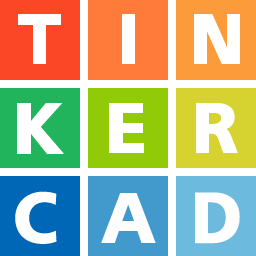A Little More About My
Tinkercad Projects
Through Tinkercad, I explored the basics of circuit design and simulation, experimenting with components like resistors, LEDs, sensors, and Arduino boards. These projects gave me hands-on experience with how electronic systems connect, function, and can be debugged in a safe virtual environment.
In this section, you’ll see a breakdown of some of my circuit builds and experiments, from simple LED setups to more complex Arduino-driven projects, along with what I learned from each one.


Project #1: Multi-LED Blinking Circuit
This project uses an Arduino Uno, a breadboard, multiple LEDs, and resistors to create a basic LED flasher sequence. Each LED is connected through a resistor to protect it from burning out, and the Arduino provides timed signals to turn them on and off in a programmed pattern.
I learned:
How to wire up multiple LEDs with resistors on a breadboard.
The importance of using resistors to manage current flow.
How to program an Arduino to control timing and sequencing.
The fundamentals of digital outputs (HIGH/LOW) and how they translate into real-world circuits.
This was my first step in moving from simple single-component circuits to programmed behavior. It showed me how software (Arduino code) and hardware (LEDs, resistors, wiring) work together, which is the foundation for more advanced projects like sensors or interactive systems.

Project #2: Seven Segment Display
This project demonstrates how a seven-segment display can be wired and controlled to show numbers. Using a breadboard, resistors, switches, and a 9V power source, I connected each segment of the display to allow different digits to light up depending on which circuits are completed.
I Learned:
How seven-segment displays work by controlling individual LEDs to form numbers.
The importance of current-limiting resistors to prevent damage to the display.
How to map out and wire multiple connections on a breadboard without shorting the circuit.
Basics of digital number representation in hardware (lighting specific segments to represent digits).
This project helped me understand how everyday digital displays (like calculators, clocks, and meters) are built at a fundamental level. It showed me how logic and wiring translate into visual outputs, giving me a foundation for more advanced display and microcontroller-based projects.

Project #3: Time Delay Circuit
This project demonstrates how to use a capacitor and transistor to create a simple time delay system. When the push button is pressed, the capacitor begins charging, and once the button is released, the stored charge keeps the circuit active for a short period of time before discharging.
I Learned:
How capacitors can store and release energy to create timing functions.
The role of transistors in switching and controlling current flow.
How resistors influence the timing length by controlling the capacitor’s charging and discharging rate.
The basics of delay circuits, which are used in real-world electronics (like lights that fade off slowly or timed relays).
This project showed me how timing and control can be built into circuits without relying on microcontrollers. It introduced me to concepts behind more advanced systems like clocks, timers, and delay-based automation.

© 2025 Muhammad Hammad